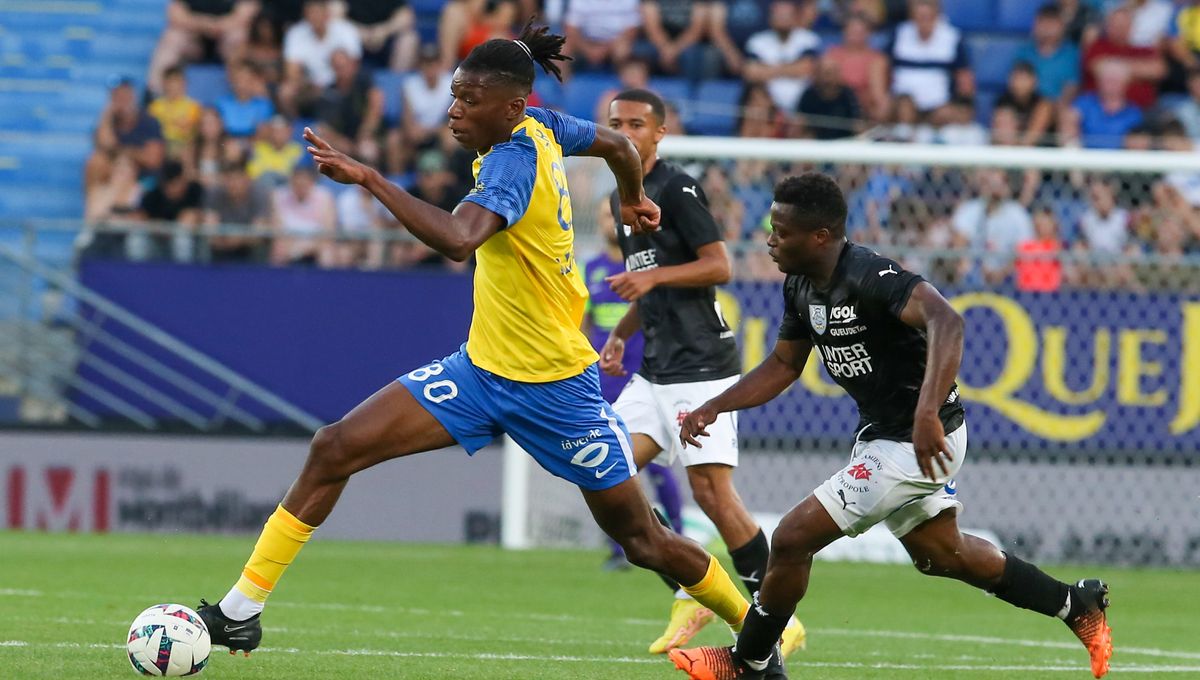Hells Angels: Myths, Realities, And Public Perception

Table of Contents
The Mythologized Hells Angels: Media Portrayals and Popular Culture
The public's understanding of the Hells Angels is heavily influenced by their portrayal in media. Hollywood, in particular, has played a significant role in shaping this perception.
Hollywood's Influence:
- Easy Rider (1969): This iconic film cemented the image of the Hells Angels as rebellious anti-establishment figures, though its portrayal was arguably romanticized and even sympathetic.
- Sons of Anarchy (2008-2014): This television series, while fictional, further solidified the association of motorcycle clubs with violence, criminal activity, and a complex brotherhood dynamic. The show's popularity contributed significantly to ongoing public fascination and misconception.
- Numerous other films and documentaries: Countless other movies and documentaries, both fictional and purportedly factual, have depicted the Hells Angels, often emphasizing their outlaw image and involvement in crime. This consistent media portrayal has deeply ingrained a specific narrative in the public consciousness.
The Rebellious Image:
The Hells Angels' rebellious image has a strong appeal, particularly to those who identify with counterculture movements.
- Freedom and Individualism: The club's association with freedom from societal constraints and an embrace of individualism resonates with some segments of the population.
- Anti-Establishment Sentiment: Their rejection of mainstream norms and values aligns with the anti-establishment sentiment found in various countercultural groups throughout history. This inherent rebellion continues to attract and fascinate onlookers.
- Nonconformity: The Hells Angels' overt defiance of societal expectations creates a powerful, if controversial, image.
Bikers and Brotherhood:
The Hells Angels are often depicted as a close-knit brotherhood, bound by loyalty and shared experiences.
- Internal Structure: The club's hierarchical structure and initiation rites contribute to the perception of a strong, exclusive brotherhood.
- Loyalty and Rituals: The emphasis on loyalty and the performance of specific rituals further reinforce this image of a tight-knit community.
- Camaraderie: The romanticized depiction of unwavering camaraderie within the club appeals to certain individuals' desires for belonging and loyalty.
The Reality of Hells Angels: Criminal Activities and Law Enforcement
While the image of the Hells Angels as rebellious bikers holds some appeal, the reality is far more complex and often involves significant criminal activity.
Organized Crime Involvement:
Numerous investigations and court cases have linked Hells Angels chapters worldwide to various criminal enterprises.
- Drug Trafficking: The club has been implicated in large-scale drug trafficking operations, including the distribution of cocaine, methamphetamine, and other controlled substances.
- Violence and Racketeering: Acts of violence, including assault, murder, and intimidation, are frequently associated with the Hells Angels, often used to maintain control over territory and business interests.
- Extortion and Money Laundering: The club has been accused of extortion, money laundering, and other financial crimes designed to maximize profits from illegal activities.
Law Enforcement Strategies:
Law enforcement agencies worldwide employ various strategies to combat Hells Angels criminal activity.
- Infiltration and Surveillance: Undercover operations and sophisticated surveillance techniques are used to gather intelligence and build criminal cases.
- Asset Seizure: Law enforcement often targets the financial assets of the Hells Angels, aiming to cripple their operations and reduce their ability to engage in criminal activities.
- International Cooperation: Given the club's global reach, international cooperation between law enforcement agencies is crucial in combating their criminal network.
Internal Conflicts and Power Struggles:
Despite the image of a unified brotherhood, internal conflicts and power struggles are common within the Hells Angels.
- Territorial Disputes: Conflicts between different chapters often arise over control of lucrative drug trafficking routes or other criminal enterprises.
- Leadership Challenges: Power struggles for leadership positions within the club's hierarchy can lead to violence and internal fracturing.
- Betrayals and Violence: The high stakes of the criminal underworld often lead to betrayals and violence even within the ranks of the Hells Angels themselves.
Public Perception and the Hells Angels: A Complex Relationship
Public perception of the Hells Angels is understandably complex, shaped by media portrayals, law enforcement actions, and individual experiences.
Fear and Distrust:
The club's reputation for violence and criminal activity instills fear and distrust in many communities.
- Community Concerns: Residents in areas where Hells Angels chapters are active often express concerns about increased crime rates, intimidation, and the disruption of their peace and security.
- Negative Media Coverage: Negative media coverage of Hells Angels activities reinforces public fear and contributes to a negative perception.
- Association with Violence: The consistent association of the Hells Angels with violence is a significant factor in shaping public perception and fueling negative opinions.
Understanding Nuances and Individuality:
It is crucial to recognize that not all members of the Hells Angels are involved in criminal activity. Generalizations are dangerous and unfair.
- Individual Accountability: While the club as a whole has a history of criminal activity, it's essential to uphold the principle of individual accountability.
- Diversity within the Club: The Hells Angels are a diverse group of individuals, and attributing the actions of some to the entirety of the organization is a dangerous oversimplification.
- Avoiding Stereotyping: Understanding the complexities of the Hells Angels requires resisting the temptation to stereotype all members based on the actions of a few.
Shifting Public Opinion:
Public opinion about the Hells Angels can shift over time, influenced by media representations and law enforcement successes.
- Changing Media Narratives: Changes in media portrayals, particularly focusing on individual stories, can influence public perception.
- Law Enforcement Successes: High-profile arrests and successful prosecutions can contribute to a more negative public perception.
- Improved Community Relations: In rare instances, positive community involvement, though unlikely, could potentially shift public perception in a favorable direction.
Conclusion
The Hells Angels Motorcycle Club presents a compelling case study in the intersection of myth and reality. Their image, carefully cultivated through media portrayals and self-promotion, often clashes sharply with the documented reality of their involvement in organized crime. While the romantic notion of rebellious bikers holds some allure, it is crucial to acknowledge the significant criminal activities associated with many Hells Angels chapters. Understanding the complexities of the Hells Angels requires a nuanced perspective, separating myth from reality. Continue to explore the multifaceted world of the Hells Angels to form your own informed opinion.

Featured Posts
-
 Effective Flood Alerts Your Guide To Flood Preparedness And Response
May 26, 2025
Effective Flood Alerts Your Guide To Flood Preparedness And Response
May 26, 2025 -
 Jeu De Gestion Cycliste Rtbf Vivez Le Tour De France Comme Jamais
May 26, 2025
Jeu De Gestion Cycliste Rtbf Vivez Le Tour De France Comme Jamais
May 26, 2025 -
 La Famille Thierry Haroche Les Difficultes Et Les Joies D Une Famille Nombreuse
May 26, 2025
La Famille Thierry Haroche Les Difficultes Et Les Joies D Une Famille Nombreuse
May 26, 2025 -
 Sorusturma Real Madrid In Doert Yildiz Oyuncusu Guendemde
May 26, 2025
Sorusturma Real Madrid In Doert Yildiz Oyuncusu Guendemde
May 26, 2025 -
 The Elon Musk Dogecoin Dilemma Whats Next
May 26, 2025
The Elon Musk Dogecoin Dilemma Whats Next
May 26, 2025
Latest Posts
-
 Nba World Reacts Tyrese Haliburtons Stellar Pacers Knicks Game Performance
May 28, 2025
Nba World Reacts Tyrese Haliburtons Stellar Pacers Knicks Game Performance
May 28, 2025 -
 Comparatif Prix Samsung Galaxy S25 256 Go Le Meilleur Bon Plan A 699 90 E
May 28, 2025
Comparatif Prix Samsung Galaxy S25 256 Go Le Meilleur Bon Plan A 699 90 E
May 28, 2025 -
 Acheter Le Samsung Galaxy S25 256 Go Bon Plan A 699 90 E
May 28, 2025
Acheter Le Samsung Galaxy S25 256 Go Bon Plan A 699 90 E
May 28, 2025 -
 Bon Plan Smartphone Samsung Galaxy S25 256 Go 5 Etoiles 699 90 E
May 28, 2025
Bon Plan Smartphone Samsung Galaxy S25 256 Go 5 Etoiles 699 90 E
May 28, 2025 -
 Offre Exceptionnelle Smartphone Samsung Galaxy S25 256 Go A 699 90 E
May 28, 2025
Offre Exceptionnelle Smartphone Samsung Galaxy S25 256 Go A 699 90 E
May 28, 2025
